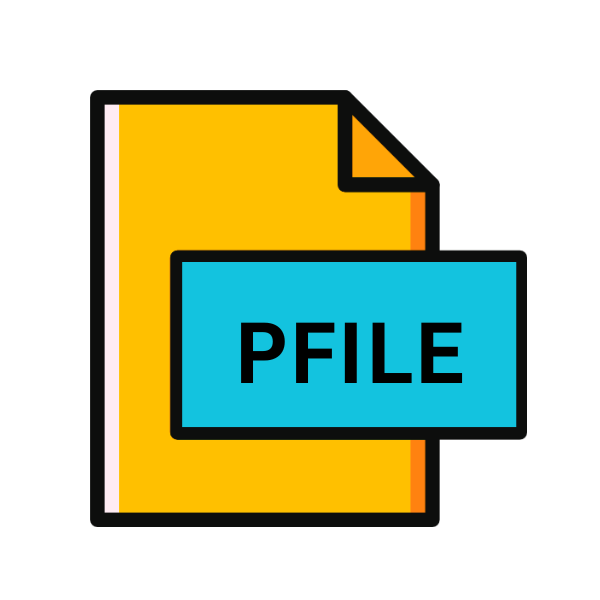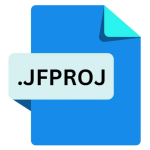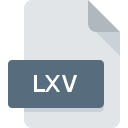.PFILE File Extension

Rights Management Protected File
| Developer | Microsoft |
| Popularity | |
| Category | Encoded Files |
| Format | .PFILE |
| Cross Platform | Update Soon |
What is an PFILE file?
.PFILE files, with the file extension .PFILE is a type of file format designed to store and protect digital content through rights management protocols. These files are utilized across various platforms and applications to ensure the secure distribution and usage of sensitive or copyrighted material.
Understanding the structure, origin, and functionality of .PFILE files are essential for users who encounter them in their digital endeavors.
More Information.
The history of .PFILE files are closely intertwined with the evolution of digital rights management (DRM) technologies. DRM refers to a set of technologies and protocols aimed at managing the use of digital content and enforcing copyright protection.
.PFILE files were developed to serve as containers for DRM-protected content, enabling content owners to specify usage rights and restrictions for their digital assets.
Initially, .PFILE files were primarily used in industries such as publishing, entertainment, and software distribution, where the protection of intellectual property is crucial.
Publishers of e-books, music, videos, and software applications relied on .PFILE files to prevent unauthorized copying, sharing, and modification of their content.
Origin Of This File.
The concept of rights management protected files traces back to the increasing need for safeguarding digital content in an era of widespread digital distribution.
As digital piracy and unauthorized sharing became prevalent, content creators and distributors sought ways to protect their intellectual property and control its usage.
.PFILE files emerged as a solution to address these concerns by implementing robust encryption and access control mechanisms.
File Structure Technical Specification.
.PFILE files employ a complex structure designed to encapsulate encrypted content along with metadata and usage rights information.
The technical specifications of .PFILE files may vary depending on the DRM system or platform they are associated with. Some common elements found in .PFILE files include:
- Encryption: Content within .PFILE files is typically encrypted using advanced cryptographic algorithms to prevent unauthorized access.
- Metadata: .PFILE files contain metadata such as author information, copyright notices, and usage rights specifications.
- Rights Management Information: These files embed rights management information specifying the permitted actions for users, such as viewing, printing, or copying content.
- Digital Signatures: To ensure the integrity and authenticity of the file, .PFILE files may include digital signatures or certificates.
How to Convert the File?
Converting .PFILE files to other formats or removing DRM protection may be challenging due to the security measures embedded within these files.Some DRM systems or third-party tools may offer limited conversion capabilities under certain conditions.
It’s important to note that circumventing DRM protection without proper authorization may violate copyright laws and terms of service agreements. Here are some general guidelines on how to convert .PFILE files:
- Use Authorized Conversion Tools: Some DRM systems may provide authorized conversion tools that allow users to convert .PFILE files to other formats. These tools typically require authentication and authorization from the content provider or rights holder.
- Seek Permission: Before attempting to convert .PFILE files, users should seek permission from the content provider or rights holder. Unauthorized conversion or distribution of DRM-protected content may constitute a violation of copyright laws.
- Explore DRM-Free Alternatives: In some cases, content providers may offer DRM-free alternatives to .PFILE files, allowing users to access and distribute content without restrictions. Users should explore these alternatives if available.
- Consult DRM Documentation: DRM systems often provide documentation and guidelines on how to handle DRM-protected content, including information on conversion procedures. Users should refer to the documentation provided by the DRM system or content provider for guidance.
- Consider Legal Implications: Users should be aware of the legal implications of converting .PFILE files or removing DRM protection without proper authorization. Circumventing DRM protection may constitute a violation of copyright laws and result in legal consequences.
- Use Third-Party Tools with Caution: Some third-party tools or software may claim to remove DRM protection from .PFILE files or convert them to other formats.Users should exercise caution when using such tools, as they may not be authorized or may violate terms of service agreements.
- Consult Legal Experts: If in doubt about the legality of converting .PFILE files or removing DRM protection, users should consult legal experts specializing in copyright law and digital rights management.
Advantages And Disadvantages.
Advantage:
- Copyright Protection: .PFILE files offer robust copyright protection mechanisms, safeguarding digital content from unauthorized access and distribution.
- Granular Control: Content creators can specify granular usage rights, allowing them to control how their content is accessed, copied, and shared.
- Secure Distribution: .PFILE files facilitate secure distribution of sensitive or proprietary content, minimizing the risk of piracy and unauthorized usage.
- Interoperability: Many DRM systems support .PFILE files, ensuring interoperability across different platforms and applications.
Disadvantages:
- Compatibility Issues: Some users may encounter compatibility issues when attempting to open .PFILE files with incompatible software or devices.
- Complexity: Implementing and managing DRM-protected content using .PFILE files can be complex and require specialized knowledge and infrastructure.
- User Experience: DRM restrictions imposed by .PFILE files may impact the user experience by limiting the flexibility and usability of digital content.
- Cost: Deploying DRM solutions and managing . PFILE-protected content may entail additional costs for content creators and distributors.
How to Open PFILE?
Open In Windows
To open .PFILE files in Windows, you’ll typically need to use compatible DRM software or applications designed to handle DRM-protected content.
Some multimedia players, e-book readers, or document viewers may support .PFILE files when integrated with DRM solutions. Ensure that the software you use is compatible with the specific DRM system employed by the .PFILE.
Open In Linux
Opening .PFILE files natively on Linux can be challenging due to limited DRM support on the platform. Some open-source DRM projects or third-party tools may provide partial compatibility with .PFILE files through reverse-engineering efforts.
Users may need to explore available options and experiment with different software to find a solution that works for their specific requirements.
Open In MAC
On macOS, you can open .PFILE files using compatible multimedia players, e-book readers, or DRM software available on the platform. Similar to Windows, ensure that the software you use is compatible with the DRM system employed by the .PFILE.
You may need to download and install DRM-enabled applications from trusted sources such as the App Store or official websites.
Open In Android
Android users can access .PFILE files using DRM-enabled applications available on the Google Play Store. E-book readers, media players, and document viewers with DRM support can handle .PFILE files, provided they are authorized to access the protected content.
Install compatible applications from trusted sources and follow any authentication or authorization processes required by the DRM system.
Open In IOS
iOS users can open .PFILE files using DRM-compatible applications downloaded from the App Store. E-book readers, media players, and document viewers with DRM support can handle .PFILE files on iOS devices, subject to the restrictions imposed by the DRM system.
Ensure that you download and install applications from reputable sources to avoid potential security risks.
Open in Others
For other platforms or devices, accessing .PFILE files may require specialized software or applications with DRM support.
Users should refer to the documentation provided by content providers or DRM vendors for guidance on accessing .PFILE-protected content on specific platforms.
Users can explore alternative file formats or DRM-free alternatives if available to ensure compatibility across different platforms and devices.













